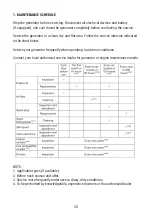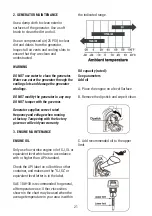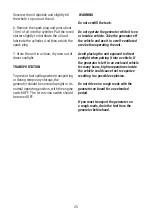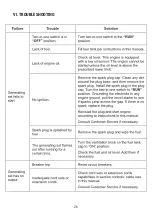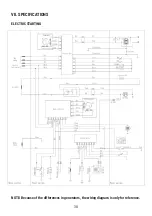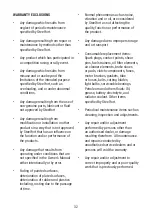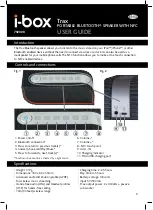
17
ELECTRICAL SHOCKS
To reduce the risk of electrical shocks, DO
NOT use electrical cords that are worn,
frayed, bare or otherwise damaged.
DO NOT touch bare wires or receptacles.
DO NOT handle generator or electrical
cords while standing in water, or barefoot,
or while hands or feet are wet.
13. LOADING CAPACITY
WARNING
DO NOT overload the generator.
Exceeding the generator’s capacity can
damage the generator and/or electric
devices connected to it.
Make sure the generator can supply
enough rated (running) and (starting)
watts for the electrical devices at the
same time.
Follow these simple steps to calculate the
running and starting watts necessary for
your purposes.
A. Count the electrical devices you will
power at the same time.
B. The amount of power you need to
run with the devices is the total rated
(running) watts of these items.
C. Starting power is the power needed
shortly when electric devices start. Since
not all devices start at the same time,
starting power can be estimated by the
maximum power of all devices plus the
total power counted in step”b”.
WARNING
It is necessary to equip with circuit
protector or switch to isolate the
generator from the electric utility when
the generator is mainly used for backup.
Failure to isolate the generator from the
power utility may result in serious injury
to the electric utility workers aswell as
causing damage to the generator due to
back feed of electrical energy.
14. WATTAGE REFERENCE CHART


















